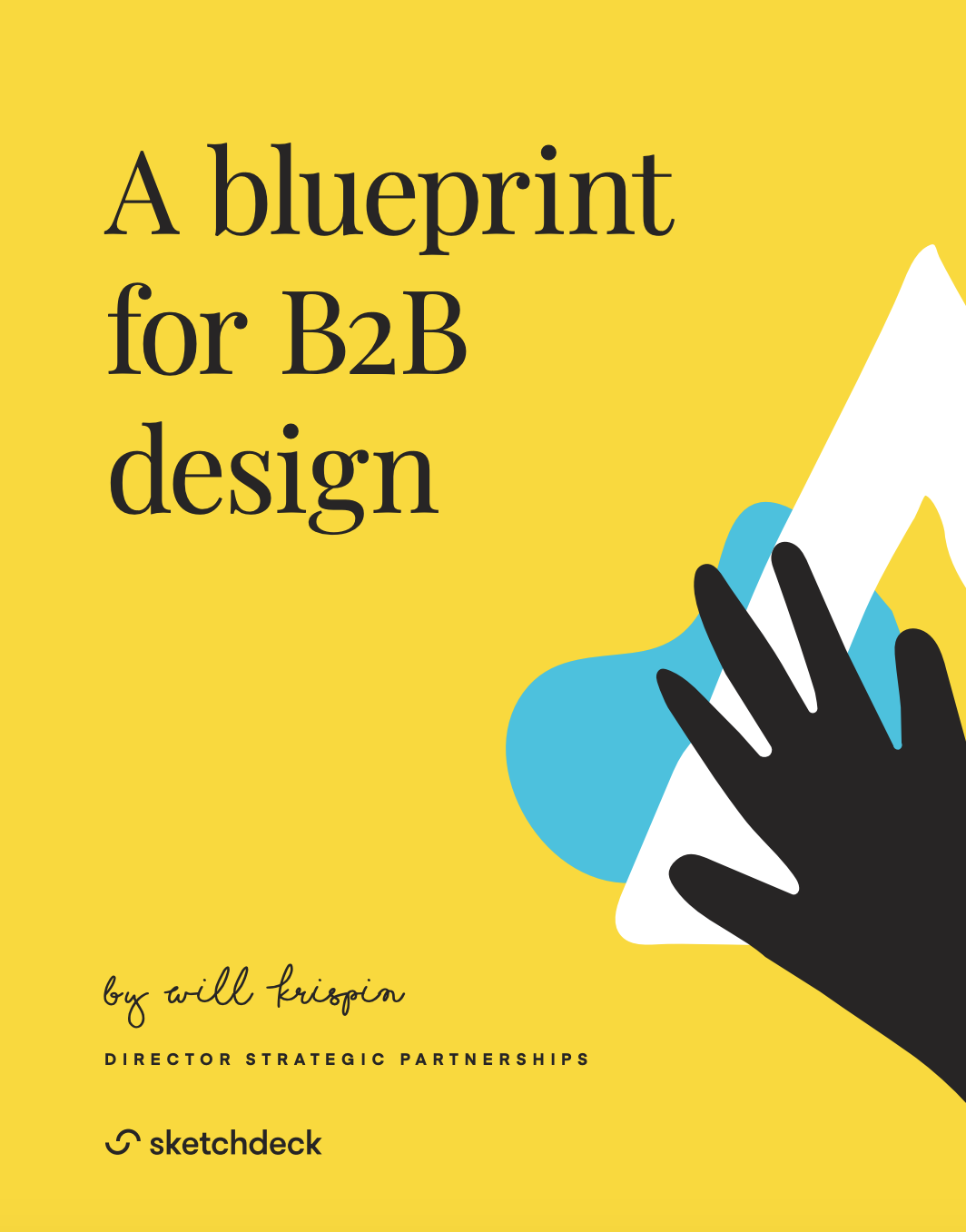
This is an excerpt from our free eBook “A blueprint for B2B design”. Click here to download the full eBook.
You’re a B2B business leader. We can probably guess what you spend most of your days doing: networking, making important financial decisions, trying to nurture potential customers who may become buyers, etc. However, unless you happen to run a marketing or design firm, there’s a good chance you don’t do very much with (or even think very much about!) design. And hey, that’s okay! It’s actually pretty normal. After all, design is often something associated closely with branding, which is a concept that most consider more critical in the B2C realm than in the B2B realm.
However, the truth is: the best B2B businesses don’t just focus on business strategy. They also focus on their business’ look and branding—much of which is shaped by design—since it helps differentiate your organization from competitors, draws in the right audience, and creates emotional reactions in potential partners or buyers. This is the stuff that makes them want to work with you instead of another B2B company.
If you’re a B2B business leader who feels like they don’t even know where to start when it comes to design, start with these important concepts. They can help you understand more about what design can do and what your design needs really are.
Your design should be cohesive (everywhere)
iPhones are like magical little machines that let you access your favorite company’s website and store and google listing and social media and more from the convenience of your own pocket. It’s all the same stuff you used to only be able to access from a PC, or a long time ago, via print branding and advertising materials. Thanks to the proliferation of mobile devices today, consumers expect a cohesive experience across all technology platforms and throughout all media. Consistent, memorable design is such an important part of B2C buying that all buyers—even B2B ones—also want (and expect) cohesive experiences. They expect the same kind of seamless process when working with B2B businesses. Part of offering a seamless experience is being consistent with branding, no matter where someone encounters it. This means that all of your branded assets should have a similar look and feel: from white papers to emails to blog posts to business cards, and beyond. Your design should be immediately recognizable to a potential buyer, who will associate it with your brand and add to their bank of information about you (which will either lead them to buy from you, or not).
Even the design of your daily deliverables matters
Design doesn’t just matter when it comes to the big stuff (like billboards or mailings). It matters in the day-to-day stuff too: from Instagram posts to PPC ads, and more. Where many B2B businesses fail is that they pay fancy design firms to create beautiful design assets for their big ventures—the things they know tons and tons of people are going to see—but they overlook the design in the little things that they put out every day. This is mostly because they don’t have the capacity with regular staff members or employees to recreate the same kind of professional, high-quality design in every single forward-facing asset that needs to go out. If you find the right agency, though (or design firm) that is able to help you with your daily designs and can handle that volume, it can end up paying off big in the long run for B2B businesses.
Data helps
To put it simply: if you want to do design right at your business, a data-centric approach helps. It may seem hard to quantify design, but there are concrete ways that you can make sure your design is working. You can track visitors on your website, develop an internal Net Promoter score, analyze the time and cost of design vs. the revenue generated by an asset, and so much more. By using data sets to see how effective your design is, you can create better personas and style guides to make sure you appeal to the right audience of buyers. As you go, you can hone and refine your design over time it consistently grows with you.
If you want to know more about design for your B2B organization and why it matters, download our eBook A blueprint for B2B design. We walk you through why design matters and how you can tackle it effectively to make it work for your company. Also, at SketchDeck, we can help you actually create designs for your company that will help you hone your brand’s image and draw in the right buyers. Reach out to us today to learn more about why design should matter to you and what design assets we can help you create.
Did you enjoy this article? It is an excerpt from our free eBook. Click here to download the full version.
